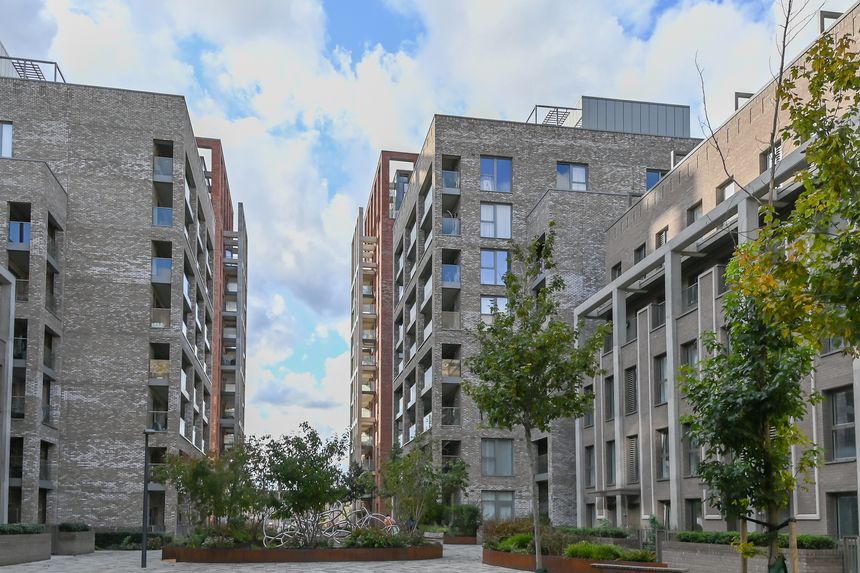Bridging the Housing Gap: Government Investment and Tax Incentives Fuel Affordable and Workforce Housing Solutions
By Brian Crawford | Michael Best Friedrich LLP | November 11, 2025
Durham, NC
As housing costs soar across the United States, federal, state, and local governments are intensifying efforts to address the growing need for affordable and workforce housing. Through strategic investments and targeted tax incentives, policymakers aim to close the widening gap between wages and housing costs, ensuring that essential workers — from teachers to first responders — can afford to live in the communities they serve.
The Scope of the Crisis
The housing affordability crisis has reached historic levels. According to the Harvard Joint Center for Housing Studies, the U.S. now has 20.3 million cost-burdened homeowners, meaning they spend more than 30% of their income on housing — a figure that rose by 646,000 in 2024 alone. Among renters, the situation is even more dire: 49% of American renters are cost-burdened, and 47% of extremely low-income renters pay more than 50% of their income on housing.
In Durham, the Fair Market Rent (FMR) for a two-bedroom unit has surged to $1,872, an 89% increase since 2019. Currently, 31% of renters in the city are cost-burdened, and 77% of low-income renters spend more than 30% of their income on rent.
Workforce Housing Under Pressure
Workforce housing — typically serving households earning between 60% and 120% of Area Median Income (AMI) — is also under strain. From 2021 to 2025, rents in workforce housing increased by over 20%, outpacing rent hikes in higher-end “discretionary” housing sectors. In regions like Florida and the Northeast, increases exceeded 25%, making it harder for middle-income earners to find stable housing.
“Workforce housing is the invisible middle,” said Emily Schultz, Senior VP at Berkadia. “These are the people who don’t qualify for subsidies but still can’t afford market-rate housing. They’re stuck.”
Government Action and Incentives
To combat the crisis, governments are deploying a mix of tools:
- Low-Income Housing Tax Credits (LIHTC) remain the cornerstone of affordable housing development.
- Zoning reforms and streamlined permitting are being used to reduce construction costs and timelines.
- Public-private partnerships are enabling cities like Durham to leverage federal and local funds for mixed-income housing.
Durham’s Forever Home initiative, backed by a $160 million investment, aims to build or preserve 2,400 affordable rental homes, move 1,700 unhoused residents into permanent housing, and create 400 affordable homeownership opportunities by 2025.
Tax Incentives Driving Private Sector Engagement
New tax incentives are encouraging private developers to participate:
- Property tax abatements for projects that include affordable units.
- Accelerated depreciation for workforce housing developments.
- Density bonuses for mixed-income projects near transit hubs.
These incentives aim to reduce financial risk and make affordable housing projects more viable in high-cost markets.
Looking Forward
Experts agree that solving the housing crisis will require sustained investment, innovation, and collaboration. “We need to treat housing like infrastructure,” said Schultz. “It’s essential to economic stability and public health.”
As Durham and other cities grow, the challenge remains: how to ensure development includes everyone — not just those who can afford it.



/Passle/5f6edd8e8cb62a0bec3e5fd2/SearchServiceImages/2025-09-11-17-02-51-670-68c300bb2b4d83f984228268.jpg)
/Passle/5f6edd8e8cb62a0bec3e5fd2/SearchServiceImages/2025-11-03-17-28-25-444-6908e6396964a8f1db8d3c55.jpg)
/Passle/5f6edd8e8cb62a0bec3e5fd2/SearchServiceImages/2025-12-11-03-07-32-500-693a357483358cbce8014c12.jpg)
/Passle/5f6edd8e8cb62a0bec3e5fd2/MediaLibrary/Images/2025-12-17-03-59-36-306-69422aa8e452dd14330072e0.png)